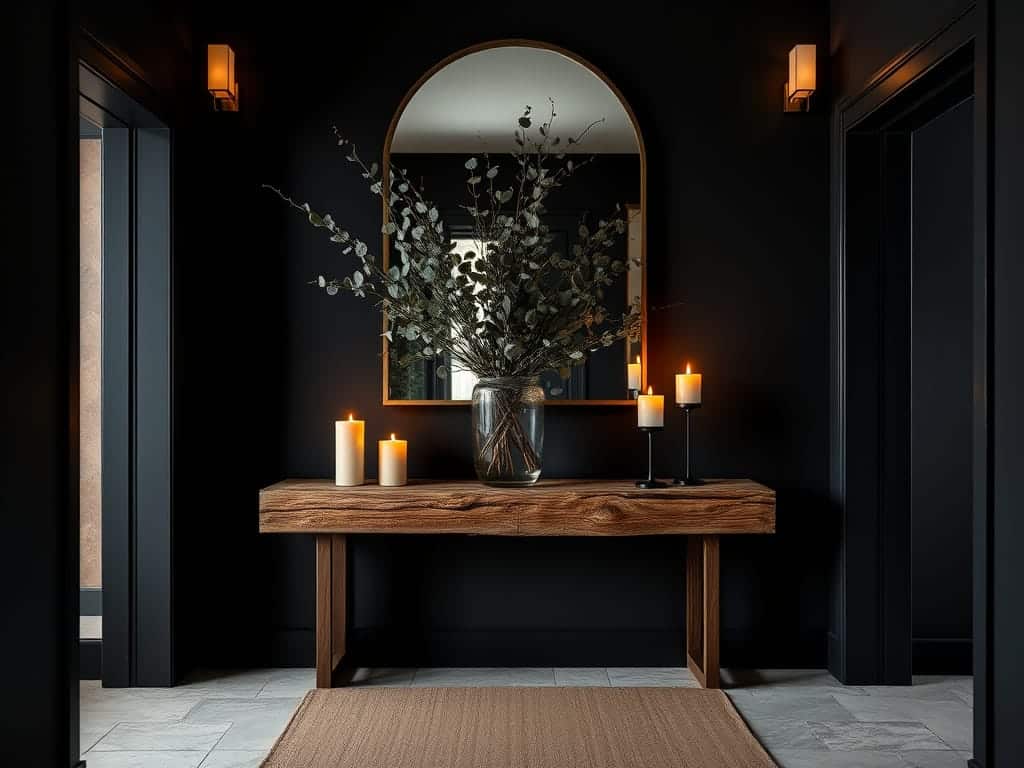Dark nature was the concept that grabbed me when I realized my space felt flat and uninspired. I craved a sanctuary that felt alive, like stepping into a twilight forest every time I opened my eyes. For years, I wrestled with bland white walls and generic decor; nothing spoke to my need for depth, calm, and a hint of mystery.
I wanted my home to whisper stories at dusk, not shout for attention in broad daylight. When I discovered dark nature, everything clicked.
Dark Nature Key Takeaways
| Key Takeaways | What It Means |
|---|---|
| Dark Nature Aesthetic | Blend deep hues with organic textures for a moody, forest-inspired vibe |
| Color Psychology | Greens soothe, blues sharpen focus; pick shades that support your mood |
| Warm Ambiance | Soft glows and layered lighting turn shadows into cozy corners |
| Natural Textures | Velvet, wood, stone, and plants add layers of tactile richness |
Why I Chose a Dark Nature Aesthetic
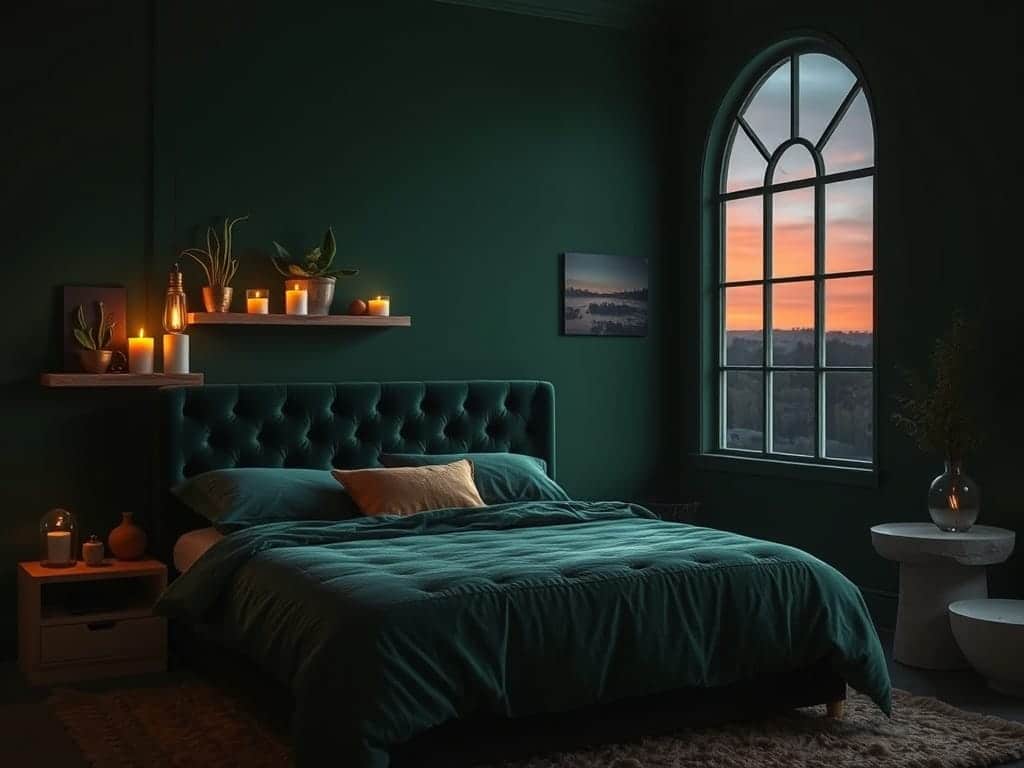
I wasn’t hunting for another safe trend — just a home that felt genuine. My old setup was fine: beige walls, mass‑market prints, a couch that sat us but never spoke to us. Each night, I’d scroll design feeds, craving something bolder. Then I saw a room drenched in hunter green, moss accents, and gentle candlelight. It looked like walking through a forest at night.
I grabbed a tester pot of deep green paint and slapped it on my living room wall. When I stepped back, my heart raced—suddenly, shadows felt like comfort, not emptiness. Those scuffs and uneven wood tones I’d been hiding? They became part of the story.
According to Architectural Digest, dark hues such as forest green and charcoal can make a room feel intimate and cocooning. Research also shows that darker palettes paired with warm light help focus and calm the mind.
Here’s why dark nature won me over:
- Emotional grounding: Deep tones anchor a restless mind after a long day.
- Storytelling: Every shadow, chip, and grain feels intentional.
- Unique signature: My space feels like mine—no cookie‑cutter showroom.
That night, I slept better than I had in years. I knew dark nature wasn’t a passing craze; it was the opposite of sterile minimalism, a chance to let nature’s mood shine indoors.
Getting Started with Dark Nature Colors
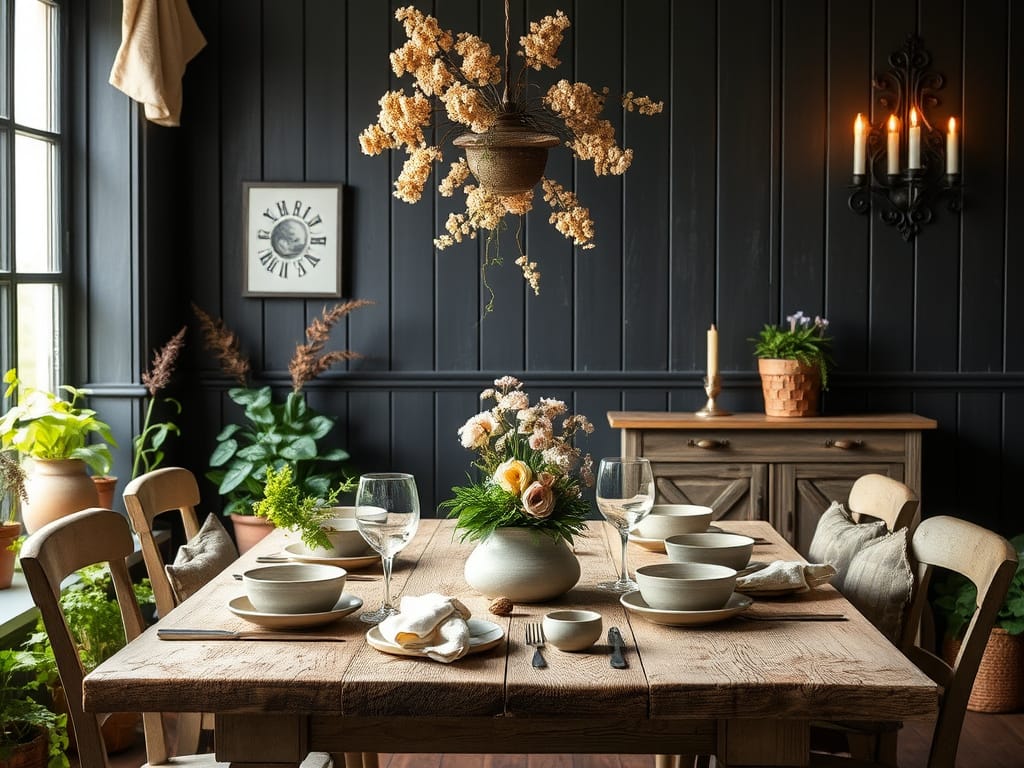
Picking paint colors can feel like staring into a deep well—endless swatches and brand names. Here’s how I nailed my first dark nature palette without overthinking:
- Choose one dominant hue
- Forest green, charcoal brown, or midnight blue work like magic.
- Too many deep colors fight for attention; pick a single hero.
- Paint test strips
- Swatches look different at dawn, high noon, and golden hour.
- I taped strips on each wall and revisited them all day.
- Accent with light trim
- Crisp white or soft beige baseboards frame the darkness so it doesn’t swallow the room.
- On archways or closets, a light border creates balance.
- Consider the ceiling color
- Matching the ceiling to the walls amplifies that “forest canopy” effect.
- Keep the ceiling pale to draw the eye upward if you crave contrast.
After months of trial and error, I settled on a moss‑green that felt alive at night and welcoming by day. My paint choice: a quality, washable matte finish—nothing fancy required.
Getting Started with Warm Colors
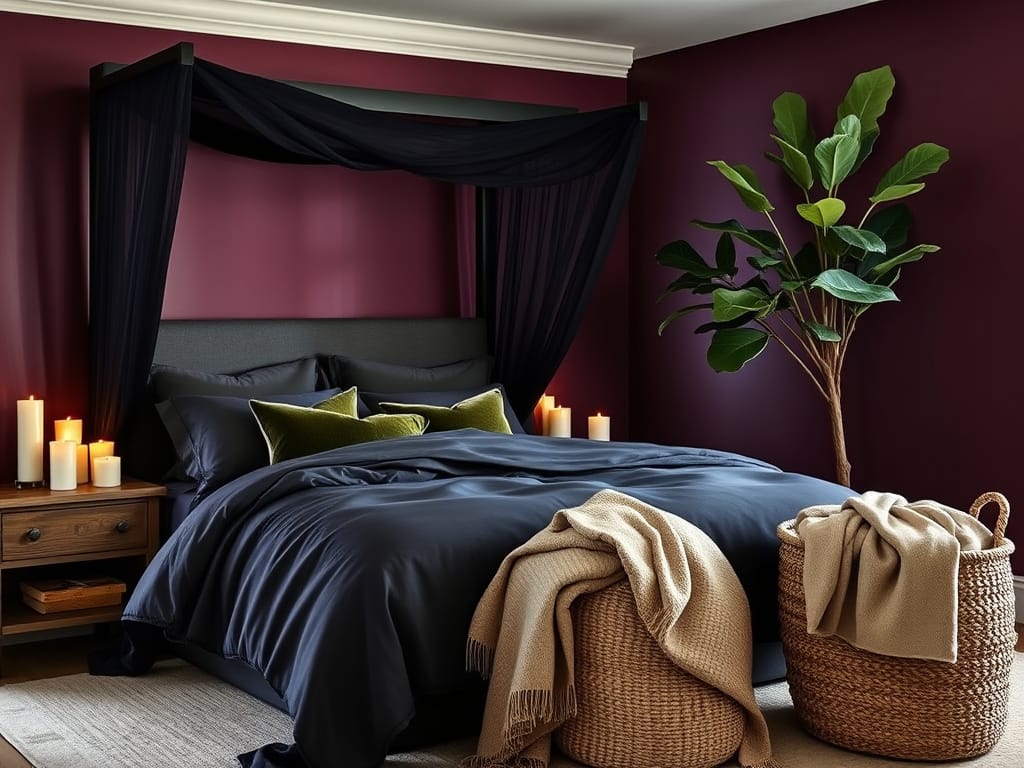
While dark nature thrives on deep shadows, pops of warm hues stop the mood from feeling heavy. Think of them as friendly sparks in a campfire:
- Textiles: Burnt orange or clay‑red throw pillows anchor a dark velvet sofa.
- Artwork: Rust‑toned prints or amber‑tinted frames break up large wall planes.
- Decor accents: Copper or brass vases and candle holders catch the light and add glow.
I still remember tossing a single terracotta throw across my charcoal bedspread. The room didn’t lose its mystery—instead, it felt richer, more alive. Those small flecks of warmth invite your gaze and keep the dark hues from feeling oppressive.
Balancing Shadow and Light with Warm Glow
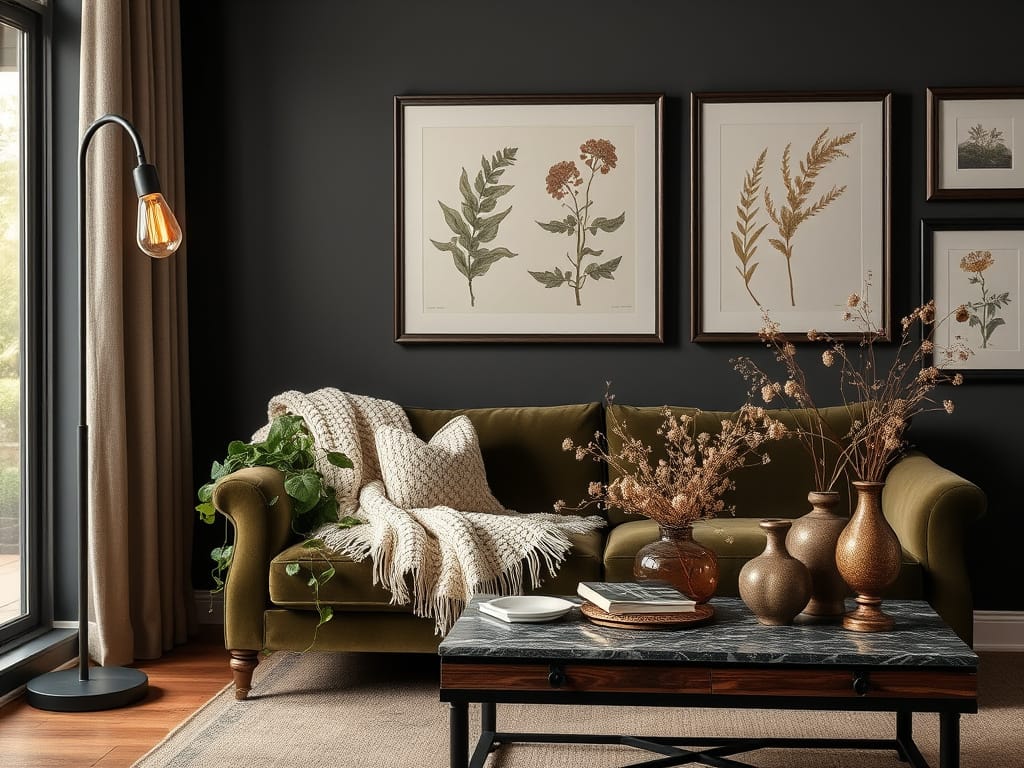
Pure darkness can feel overwhelming without a lighting plan. I learned this the hard way after painting my library walls in navy and fumbling through pitch‑black evenings.
My lighting strategy:
- Layered sources
- Table lamps, floor lamps, and wall sconces at different heights.
- Edison bulbs or soft LED filaments for a gentle amber glow.
- Dimmer switches
- Control overhead fixtures to dial mood up or down.
- Nighttime reading? Set lamps low so pages glow, not glare.
- Candle clusters
- Real wax or quality LEDs in varied heights feel like forest lanterns.
- Group them on trays, shelves, or the fireplace mantel.
- Reflective accents
- A brass mirror or polished stone side table bounces light into corners.
With these layers, I turned every shadow into an opportunity. Each corner now feels like a secret nook, inviting you to lean in and linger.
Building Depth with Natural Materials
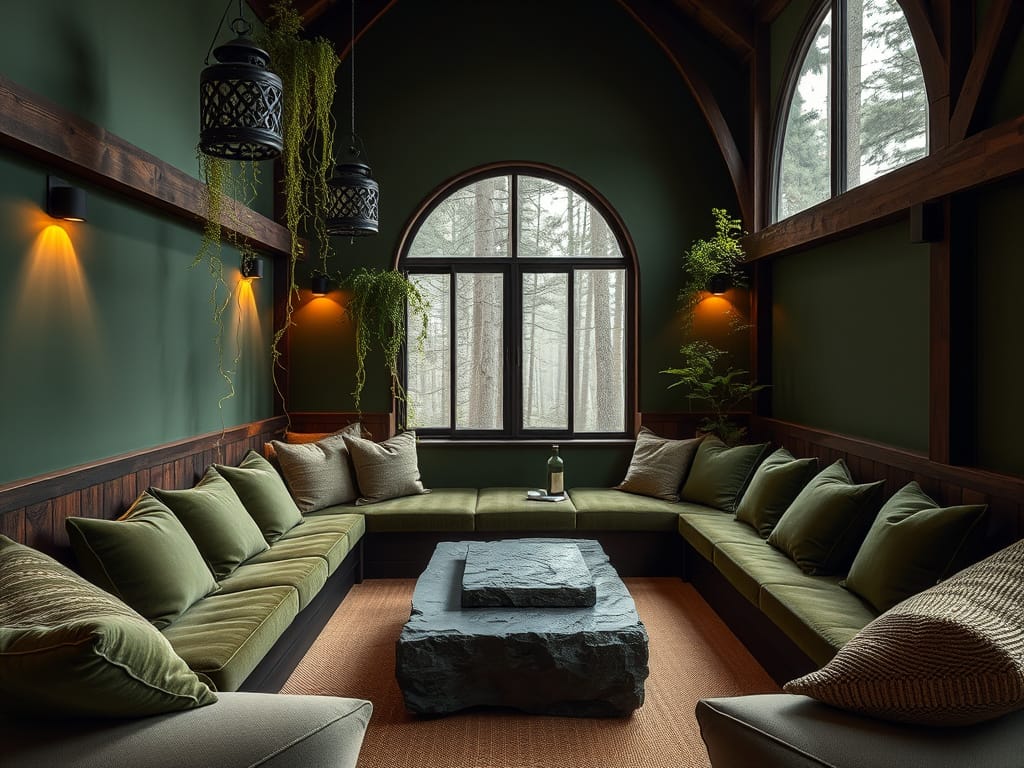
Color sets the mood; materials make it tangible. I gathered elements that echoed the forest floor:
- Wood
- Live‑edge shelves, dark walnut consoles, reclaimed barn‑wood beams.
- Stone
- Slate coasters, marble side tables, volcanic basalt planters.
- Textiles
- Velvet throws, linen sheets, wool rugs with low pile.
- Metal accents
- Aged brass picture frames or copper‑finished lamp bases.
Why these choices work:
- Tactile richness: Every surface invites touch—no flat finishes.
- Organic dialogue: Bark tones, stone textures, and woven fibers echo the outdoors.
- Contrast of feel: Smooth marble against rough wood, soft wool against hard metal.
My coffee table is a chunk of black granite set on iron legs. I run my palm over it each morning—a small ritual that grounds me before the day begins.
Bringing Deep Green Life to Your Dark Nature
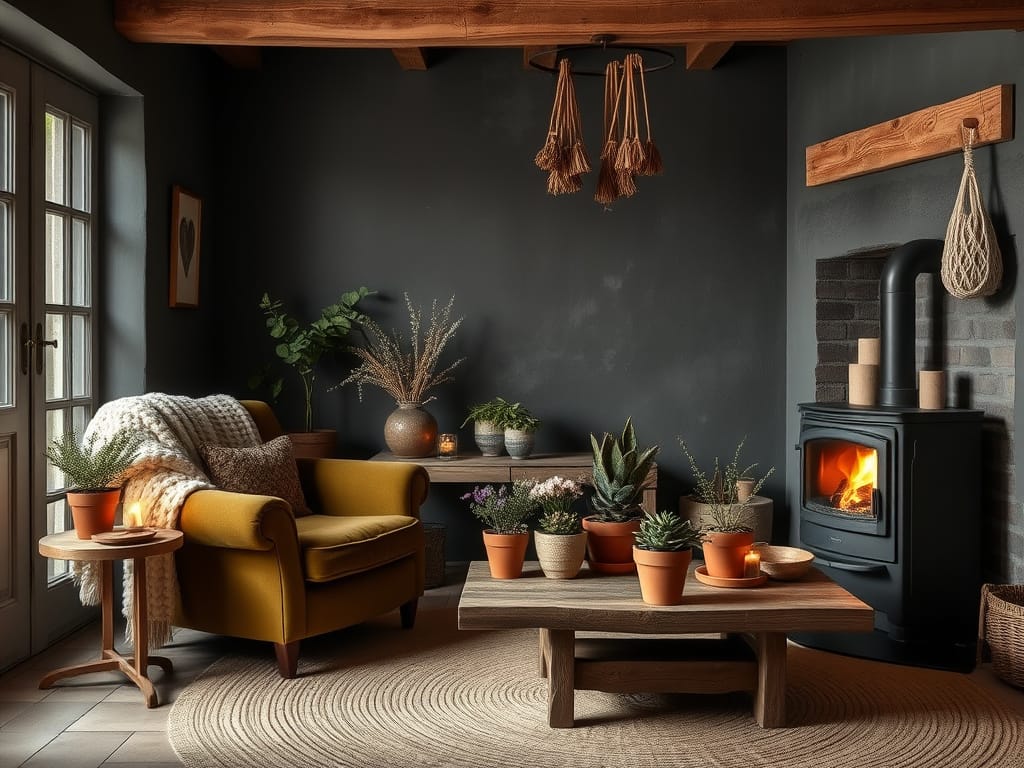
Nothing breathes life into a moody room like real foliage. Green is credited as the most restful color for the eye, so plants are more than decoration—they’re mood‑boosters.
Top plant picks for dark corners:
- Snake plant: Architectural leaves that stay upright, even in low light.
- ZZ plant: Glossy, dark leaves that thrive on neglect—great for beginners.
- Monstera: Those split leaves soften harsh shadows, adding visual interest.
I cluster plants by my window and on floating shelves. Their living green contrasts with deep paint, reminding me that darkness can feel vibrant. A trailing pothos or two adds movement, like vines creeping along a forest wall.
Layering Textures for Cozy Comfort
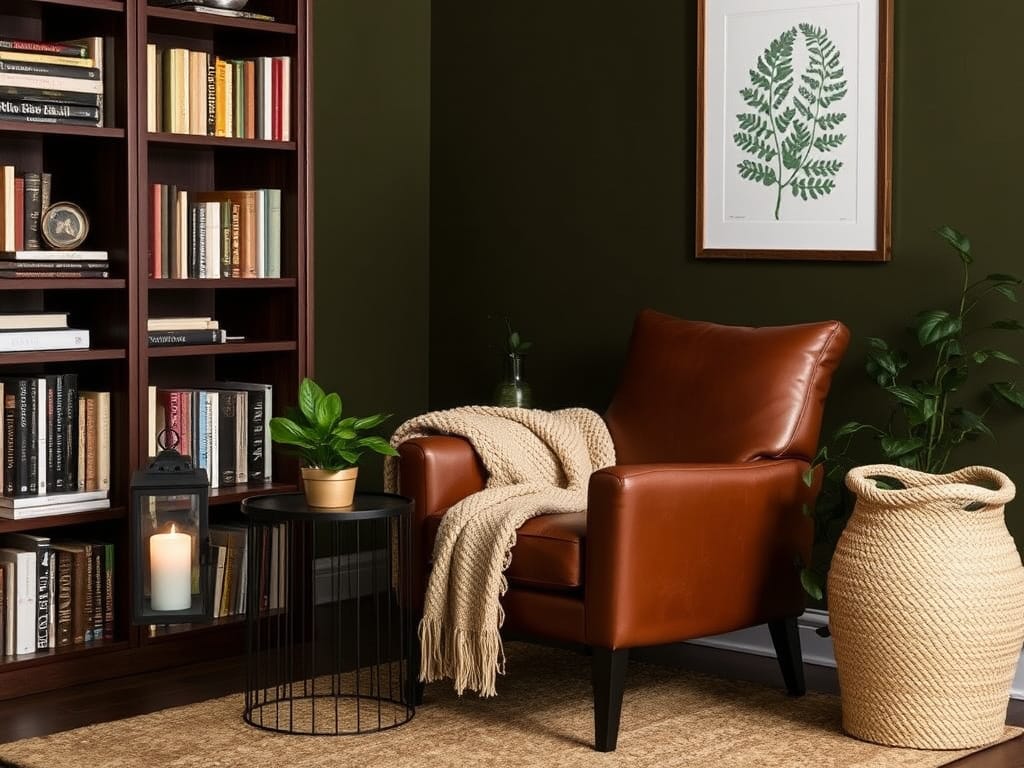
When I tell guests my home feels like a night‑time woodland, they nod—then touch every corner. Here’s how I layer without overdoing it:
- Rugs
- A neutral wool rug with slight variations in pile anchors the room.
- Throws and pillows
- Mix bouclé, knit, and faux‑fur in olive, charcoal, and taupe.
- Wall hangings
- Woven tapestries or lightweight macramé on dark walls add relief.
- Decor accents
- Hand‑thrown ceramic bowls, carved wooden trays, or stone sculptures.
Texture tips:
- Odd numbers: Cluster items in groups of three or five.
- Height variation: Taller plants next to low side tables, mid‑height lamps beside floor‑level poufs.
- Negative space: Leave calm pockets so the eye can rest on dramatic walls.
Each layer pulls you deeper into the mood, making the room feel lived‑in and personal.
Styling Tips I Swear By
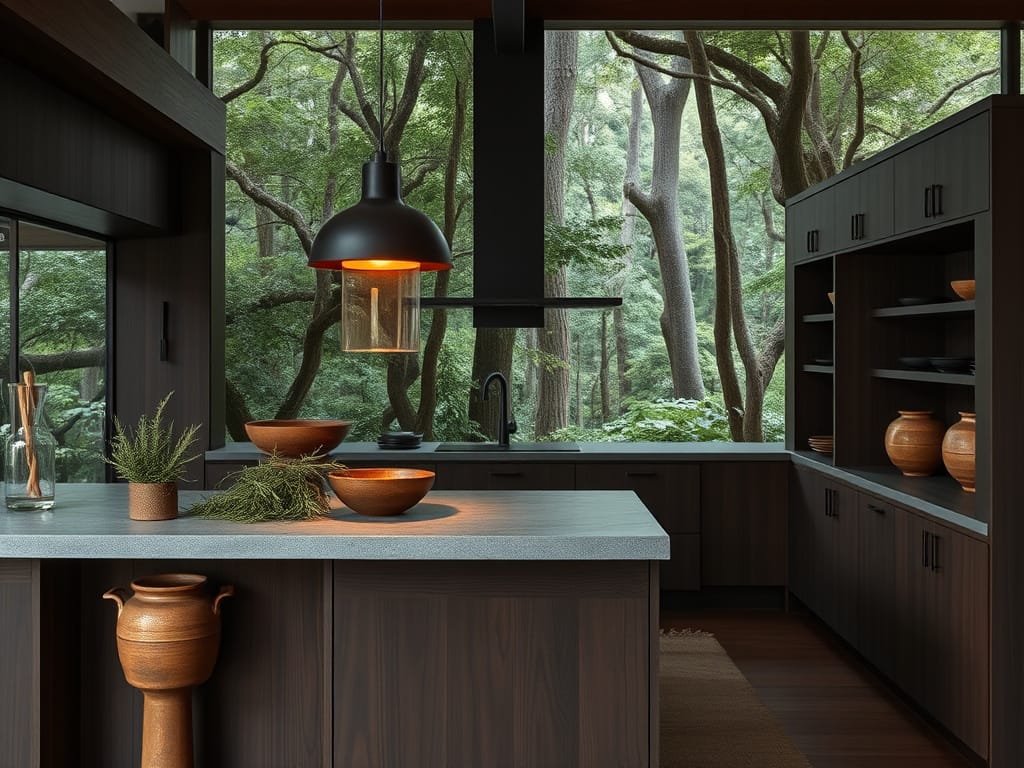
After scouring countless feeds, I boiled down my approach to these core habits:
- Mix old and new: A vintage frame beside minimalist art keeps things fresh.
- Odd sets: Three candlesticks, five vases—never an even number.
- Varied finishes: Matte walls, glossy accents, and rough‑hewn wood in one frame.
- Seasonal swaps: Rotate pillows or throw blankets for a quick mood shift—no repaint needed.
Stick to these rules, and your space will feel intentional, never staged.
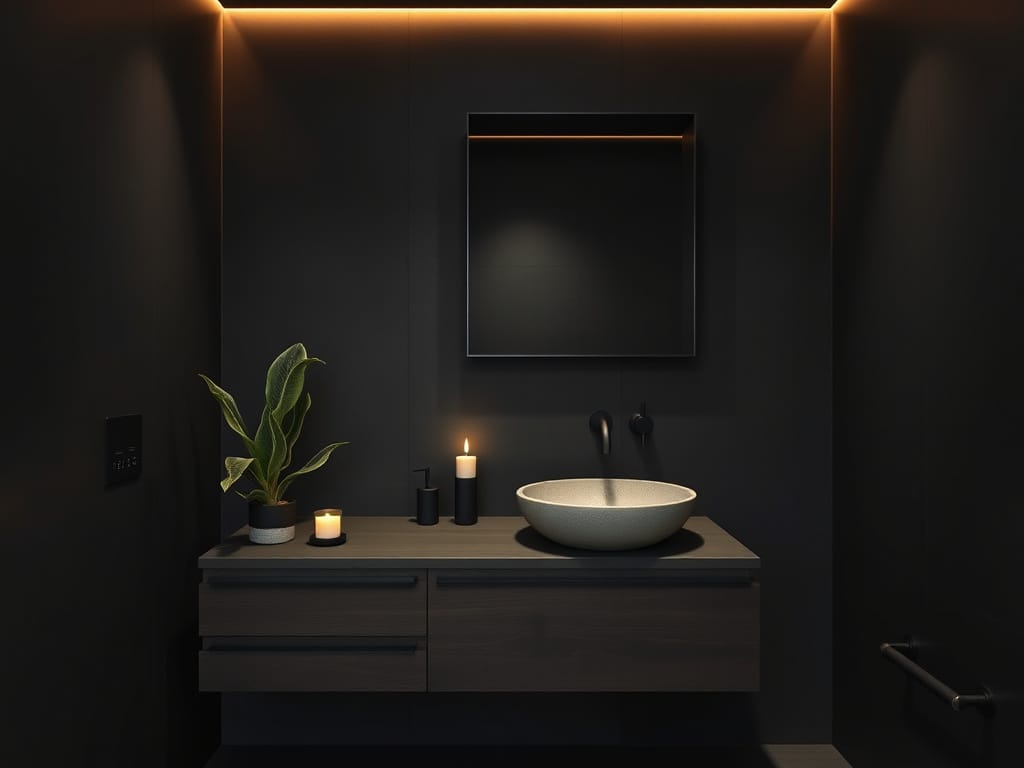
FAQs about Dark Nature Decor
Q: Will deep hues make my room feel smaller?
A: If your room is tight on space, start with a single accent wall. Pair it with lighter walls and clean trim to keep air and light balanced.
Q: How do I keep dark paint looking fresh?
A: Choose a washable matte finish. Dust weekly with a microfiber cloth to prevent buildup.
Q: Can I use this style outdoors?
A: Yes. Dark‑stained wood furniture, charcoal planters, and deep‑green cushions echo the vibe on a covered patio. Just seal or protect materials from weather.
Q: Is this budget‑friendly?
A: You don’t need pricey brands. A quality paint, thrifted textiles, and DIY plant shelves go a long way.
Q: What if I get tired of the mood?
A: Swap accent pieces—pillows, art, or small decor—in lighter hues like ochre or blush to refresh without repainting.
Embracing Dark Nature Daily in Your Home
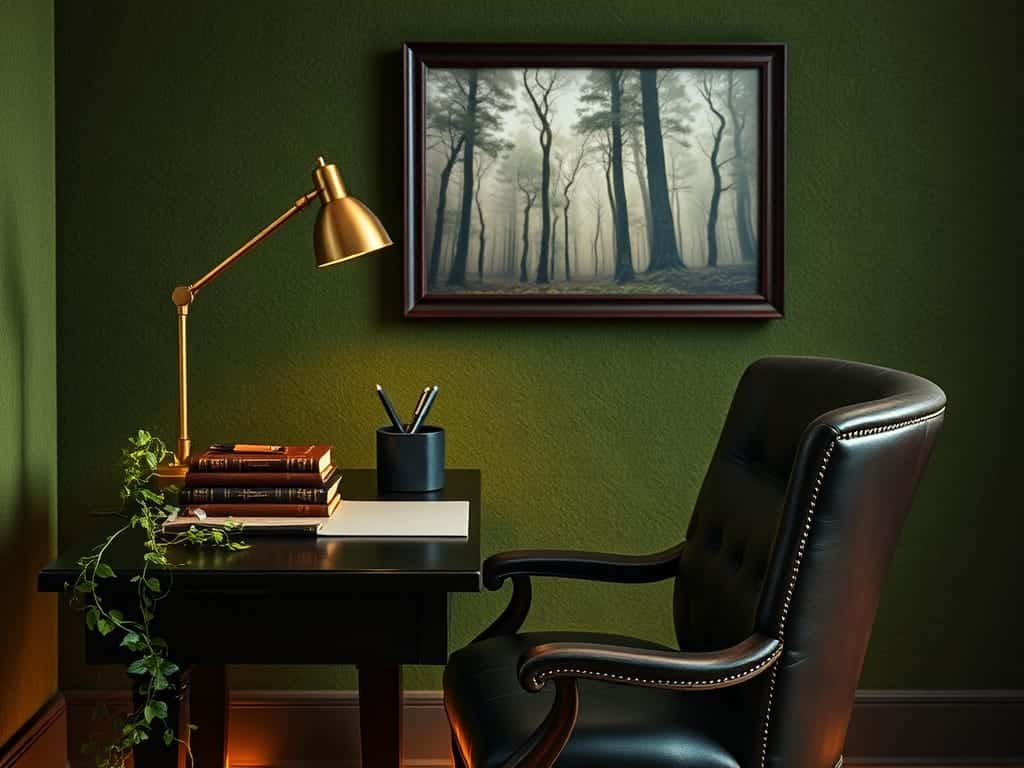
Living with dark nature isn’t a one‑and‑done makeover—it’s an ongoing habit. I wake to the soft glow of linen curtains against moss‑green walls, brew tea in a stoneware mug, and let morning light filter through fern leaves. Each corner holds a story in shadow and texture. That’s how I built a sanctuary I love — my very own dark nature retreat.
